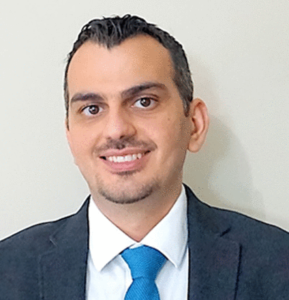Someone driving around a city on a regular basis will see ambulances. At times they’re going somewhere fast; sometimes they’re just driving. What if, on a given day, fewer ambulances are visible?
One possible conclusion might be: the ambulances are away responding to a group of people who need help. This effect resembles what Arshed Quyyumi and colleagues from Emory Clinical Cardiovascular Research Institute observed in a recent paper, published in the Journal of the American Heart Association.

Arshed Quyyumi, MD
Quyyumi’s team looked at progenitor cells, which circulate in the blood and are attracted to sites of injury. In a group of 356 patients with stable coronary artery disease, the researchers saw that some (31 percent) had “ExMI” – exercise-mediated myocardial ischemia. That means impairments in blood flow were visible via cardiac imaging under the stress of exercise. This is a relatively mild impairment; participants did not report chest pain. This paper emerges from the MIPS (Mental Stress Ischemia Prognosis) study, 2011-2014.
The ambulance-progenitor cell analogy isn’t perfect; exercise, generally a good thing, increases progenitor cell levels in the blood, says co-first author and cardiology fellow Muhammad Hammadah. The study supports the idea that patients with coronary artery disease may benefit from cardiac rehab programs, which drive the progenitor cells into the ischemic tissue, so they can contribute into vascular repair and regeneration.

Muhammad Hammadah, MD
Patients with ExMI tended to have a decrease (18 percent) in the levels of progenitor cells in their blood, while the rest of the group saw an increase (14 percent). In the ExMI group, more severe ischemia was linked with a greater decrease in progenitor cells. What’s the explanation? In ExMI, the progenitor cells are homing to the site of injury in the heart, mediated by a stem cell attracting factor called SDF-1a. The researchers did not directly observe the progenitor cells going into the heart, but this is a reasonable inference from previous studies.
Quyyumi’s team has studied circulating progenitor cells extensively, both as a biomarker predicting regenerative capacity and outcomes, and as a potential therapeutic agent. If their numbers are lacking, these rare cells can either be extracted from the bone marrow and delivered into the heart, or mobilized into the blood pharmaceutically. An NIH-funded study examining the effects of GM-CSF, one of those mobilizers, in combination with exercise in peripheral artery disease is underway.
Hammadah and Ayman Smman Tahhan are the co-first authors of the paper – see JAHA for the entire author list.
Extra note: see this recent ECCRI paper on circulating progenitor cells in people who have inherited very high cholesterol.


Pingback: Cellular repair response to treadmill test can predict cardiac outcomes – Medicine Knowledge Articles